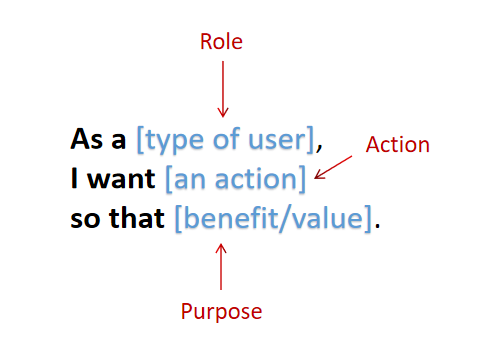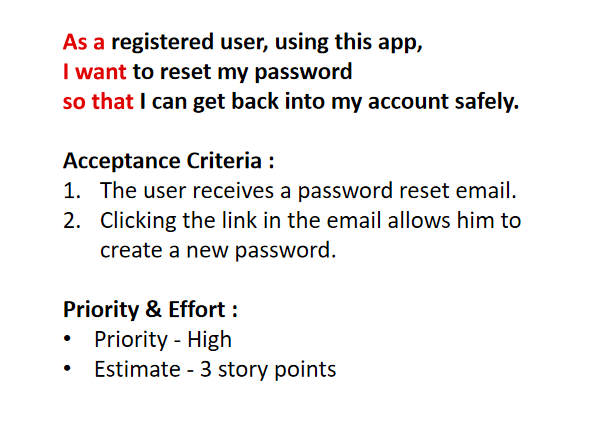In the dynamic landscape of software creation, mastering the art of writing user stories stands out as a crucial skill for teams aiming to build products aligned with user needs. This comprehensive guide demystifies the process of writing user stories, offering a simplified approach to software development.
Why User Stories Matter
Before we dive into writing user stories for a given set of requirements, let’s grasp the importance of this practice and understand how it paves the way for a more effective and user-centric software development process.
- User-Centric Approach: User stories keep the focus on what users truly desire, ensuring that development efforts are aligned with real user needs.
- Adaptability: User Stories are simple, easy-to-understand narratives that facilitate agile development, allowing for flexibility and adaptability in changing requirements.
- Team Collaboration: User stories encourage collaboration between cross-functional teams, fostering communication and shared understanding among developers, designers, and stakeholders.
- Effective Prioritization: With a clear understanding of user needs, teams can prioritize features based on their impact and importance to end users.
The Structure of a User Story
Writing user stories boils down to a simple structure:

In a Nutshell
Mastering the process of writing user stories enables us to transform user requirements into the building blocks of software. A well-written user story not only helps the development team to extract the exact user requirements but also helps to develop the requirement faster. It finally ensures that the resulting product is one that users genuinely love to use.
How to Write User Stories
In this section, I’ll guide you through the process of writing user stories step by step. Imagine a scenario where a client verbally expresses the need to reset their password for secure account access.
The client would probably describe the requirement as below,
"I need to reset my password to make sure my account stays safe and sound."Now let’s write a user story from the above requirement.
Step 1: Identify the User and Role
- Identify the user involved and their role in the system. In this case, the client is the user who wants to reset their password.
- Define the type of user (e.g., customer, admin) and their role in the system.
Example: As a registered user…
Step 2: Specify the Action
- Articulate the specific action the user desires. In our example, the action is to reset the password.
- Describe the specific action the user wants to perform.
Example: …I want to reset my password…
Step 3: State the Purpose
- Explain why the user wants to perform this action and the benefit they seek.
- State the purpose of the scenario.
Example: The client aims to regain access to their account securely.
Step 4: Combine Steps 1-3
- Combine the user, action, and the purpose to write the user story as below.
“As a registered user using this app,
I want to reset my password
so that I can get back into my account safely.”
Step 5: Add Acceptance Criteria
- Specify the conditions that must be met for the user story to be considered complete.
Example: Acceptance Criteria
-
- The user receives a password reset email.
- Clicking the link in the email allows him to create a new password.
Step 6: Include Priority and Estimate
- Determine the urgency and estimate the effort required for development.
- Assign a priority level (e.g., high, medium, low) and estimate the effort required.
Example: Priority – High, Estimate – 3 story points
Step 7: Review and Refine
- Collaborate with team members to refine and ensure the user story is clear and meaningful.

Repeat these steps for additional user stories, maintaining a balance between simplicity and completeness. User stories provide a foundation for iterative development, enabling teams to deliver value incrementally and respond to changing requirements effectively.
For insights on how to write test cases from user stories, check out our vlog ‘How to Write Test Cases from User Stories.’
Simplify Your Development Journey
This article guides you through the process of writing user stories for straightforward requirements in a concise 7-step process. While these steps offer valuable insights, delving into the intricacies of extensive software system requirements often necessitates specialized knowledge and support. Breaking down these intricate requirements and aligning them with Agile processes, particularly for sprint deliverables, demands expert guidance.
If you’re tackling more complex software projects, our team is prepared to provide the necessary expertise. Whether you need assistance in simplifying requirements or crafting user stories for a sophisticated project, our expertise can assist you. Explore how our team can transform your project by reaching out to us or discovering more about our User Stories and Wire-frame Development service today.